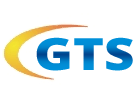Australia and New Zealand
![]()
C-Tick sign
![]()
RCM sign
Nature: mandatory (Voluntary)
Requirements standards: security and EMC
Voltage: 240Vac
Frequency: 50Hz
CB system member states: Yes
Electrical products shipped to Australia must comply with electrical safety and electromagnetic compatibility requirements, for some products must also comply with Australia's MEPS energy requirements.
In Australia, the electrical safety assessment system is the state or county responsibility system, and each certification body implements a reciprocal, unified certification approval program under the 1945 electrical safety act. Electrical products are classified into two categories: "to be declared" and "not to be declared".
"To declare" under the category of electrical products must comply with Australian standards related to safety and won a state certification certificate.
The electrical products under "no declaration" category may be sold without prior approval. However, retailers, manufacturers and importers must ensure the electrical safety of such products.
In Australia, EMC requirements are controlled by the electromagnetic compatibility framework (radio communication Act 1992). All electrical products within the scope of this architecture must comply with Australian standards and from the Australian Communications Authority to obtain the right to use CTick sign.
The RCM logo can also be used for products that meet both electrical safety and electromagnetic compatibility requirements.
Any Australian security sign is also recognised in new zealand.
Standards Australia. Standards Australia International Limited, its predecessor was established in 1992, Australian Commonwealth Engineering Standards Association, 1929 Association of Australian changed to Standards (SAA). The Australia called SAA certification certification should be based on the "SAA standard to certification" referred to as the standard setting is not issued from SAA product certification.
SAA was renamed Standards Australia in 1988 and changed from association to limited company in 1999. It is called Standards Australia International Limited. SAA is an independent company that has no direct relationship with the government, although the federal and state governments are members of it. However, because of the importance of technical infrastructure in any country, it means that it is essential to work closely with the government. To ensure this, there has been a memorandum of understanding between SAA and the federal government since 1988, recognizing that SAA is the highest level of non-governmental standards bodies in australia. In the memorandum pointed out that the standard formulation should be consistent with the requirements of the WTO. For this reason, there is agreement that when the right international standards already exist, there is no need to formulate new Australian standards.
Australia's standards start with "AS", and Australia and New Zealand combine standards as "AS/NZS" standards. Australia and New Zealand standard criteria consistent with IEC (currently in Australia there are 33.3% standards fully in line with national standards), there are some differences between countries, such as the location, some of the product standard (such as fan) regulations must be according to the tropical climate to consider.
The state is able to issue SAA certificate:
1. Queensland: Q051123
2. Western Australia: W2015
3., Victoria:, V99, V05212
4., New, South, Wales:, NSW22736, N19022
5., South, Australia:, S1, S442
6. Tasmania: T05123
7., Australian, Capital, Territory:, A050
Only Queensland, Victoria, New South Wales three for receiving foreign capital.



